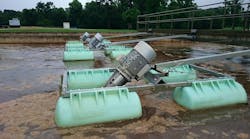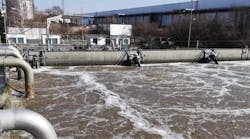In the March 2015 issue of Water Technology, Technical Editor Dr. Joe Cotruvo writes about viruses in drinking water in his Contaminant of the Month column. In the article, Cotruvo describes what viruses are and why they pose risks to public health through drinking water.
Viruses are submicroscopic in size, but they can have large effects on organisms. They replicate by taking over a cell’s DNA function. Copies of the cell are then released from leakage or rupture, writes Cotruvo.
Bacteria and viruses are different from each other. For treatment, some antiviral medications are available, but antibiotics are not effective against them.
Health risks
A few examples of viruses that can infect people are influenza, rhinovirus (common cold), hepatitis, polio and norovirus, states Cotruvo. Some viruses can cause gastroenteritis, which describes illnesses that involved stomach or intestines inflammation. The viruses that can cause gastroenteritis can be present in contaminated water. They include:
- Rotavirus
- Norovirus
- Adenovirus
These viruses usually clear up one to two days, Cotruvo explains. Other infections, however, can be more severe. Examples include hepatitis A as well as carcinogenic viruses such as hepatitis B and C.
Thirty-three disease outbreaks related to drinking water were reported in 2010, a number that is underreported and less than years prior. Norovirus and hepatitis A were two of the illnesses reported.
Water treatment
Viruses can be removed from drinking water with traditional treatment (coagulation, flocculation, sedimentation, filtration, disinfection), notes Cotruvo. "Chlorine, hypochlorite, chlorine dioxide and ozone are all excellent primary disinfectants and most effective when applied to clarified low turbidity water," he adds. However, chlorine and hypochlorite are not effective against protozoa.
Although microfiltration and ultrafiltration membranes’ pores are often larger than many viruses, they are still usually effective for multilog removals.
Detection
The presence of human viruses are not regularly tested, except when waterborne outbreaks occur, Cotruvo reports. At least four logs of virus removal are required for surface water treatment, white groundwater treatment regulations necessitate four logs for systems that require treatment. Finally, caution should be taken regarding private wells, which, even though they are not regulated, are still at risk of contamination from septic tanks and surface percolation.


